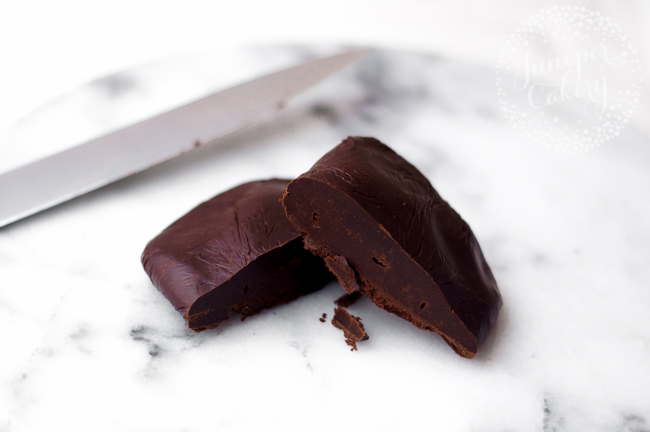Modeling chocolate is an amazing edible material. It’s tough and sturdy, which makes it great for molding or sculpting! Making your own modeling chocolate, though, can be a bit tricky: It’s common to run into problems that can make your chocolate hard to work with or sloppy looking. We’re here to help!
6 common modeling chocolate problems you may run into — and how to fix them!

1. Why is my modeling chocolate crumbly and hard to work with?
The first culprit could be the temperature: If the weather has been particularly chilly or if you’ve stored your mix in the fridge, you’ll need a little patience. Leave the chocolate out at room temperature for a few hours to soften up a little. Whatever you do, don’t heat it up by force (in the oven, microwave, hot water, radiator, etc.), which could make your chocolate melt quickly.
Second, double check your measurements in your recipe to make sure you’ve added the correct weight of chocolate. Too much chocolate can lead to a stiffer, more dry and more crumbly modeling chocolate.

2. My modeling chocolate looks a little dry. What can I do?
This modeling chocolate problems can be easily fixed! If your modeling chocolate feels workable but just a bit dry, you can “moisten” it with a little vegetable shortening (like Crisco or Trex in the U.K.). Work this into the mix and test it out!
3. My modeling chocolate is ridiculously hard! What happened?
There are three main culprits for this issue:
- Your measurements may have been off when making the modeling chocolate. If you added more chocolate than the recipe called for, the end product may be firmer than intended.
- You used Candy Melts to make your modeling chocolate. Some recipes call for candy melts, but they’re intended for a totally different purpose. Instead, stick to high-quality tempered chocolate!
- Your modeling could be old. It doesn’t last forever! For homemade modeling chocolate, you don’t want to use it after about 5-6 months. Just toss it and begin again.

4. There are lumps and bumps in my modeling chocolate mix. Why?
Chances are your chocolate wasn’t melted down properly. When making modeling chocolate, you need to take extra care to make sure every last bit of chocolate has melted down before adding in your corn syrup.
Another cause for lumpy modeling chocolate is poor mixing. When the corn syrup and melted chocolate haven’t incorporated fully together, the unincorporated chocolate will set as usual (and be too firm), while any well-mixed portions will be softer.

5. Why hasn’t my modeling chocolate set well?
You probably added too much corn syrup. Corn syrup makes the chocolate pliable and easy to work with — but too much of it leads to squishy modeling chocolate that’s too pliable.
Another possible culprit: You could be heating up your modeling chocolate without realiing! Check to see if you’ve kept it near a stove, hot oven or radiator. Warm weather could even be softening your modeling chocolate.
Finally, the chocolate may just need more time to set up. Leave it to set a little longer — 2-3 hours or even overnight in some cases is not an unusual amount of time to wait.

6. Why is my modeling chocolate greasy?
Chocolate contains oils. As you handle modeling chocolate, these oils separate from the mix due to the heat from your hands.
Avoid over-working your modeling chocolate, but if it begins to get oily, set it down on a marble plate or slab to cool down. Try to cool down your hands, too! A general rule of thumb is to work quickly so you’re not handling your work for too long.

Share tips, start a discussion or ask one of our experts or other students a question.
No Responses to “Why Is My Modeling Chocolate Crumbly? (+5 More Common Problems)”